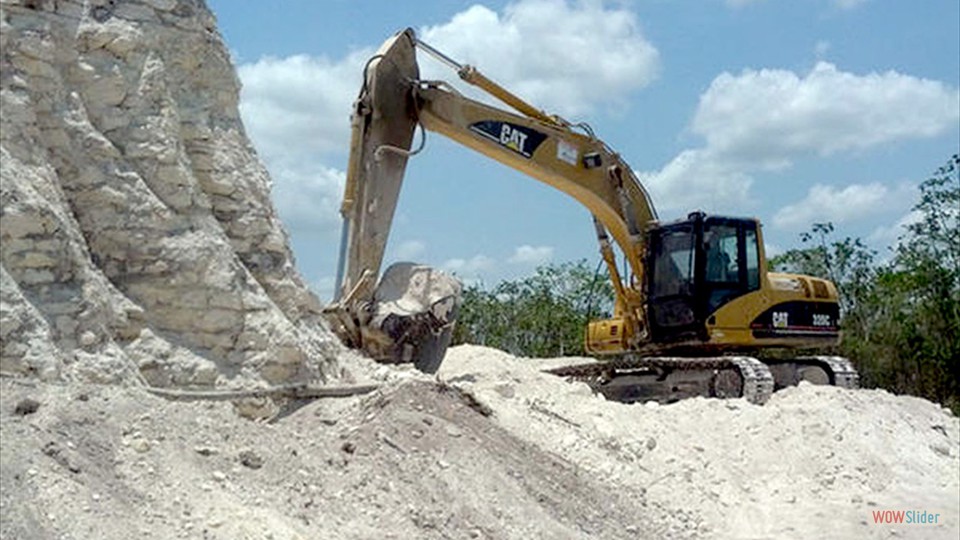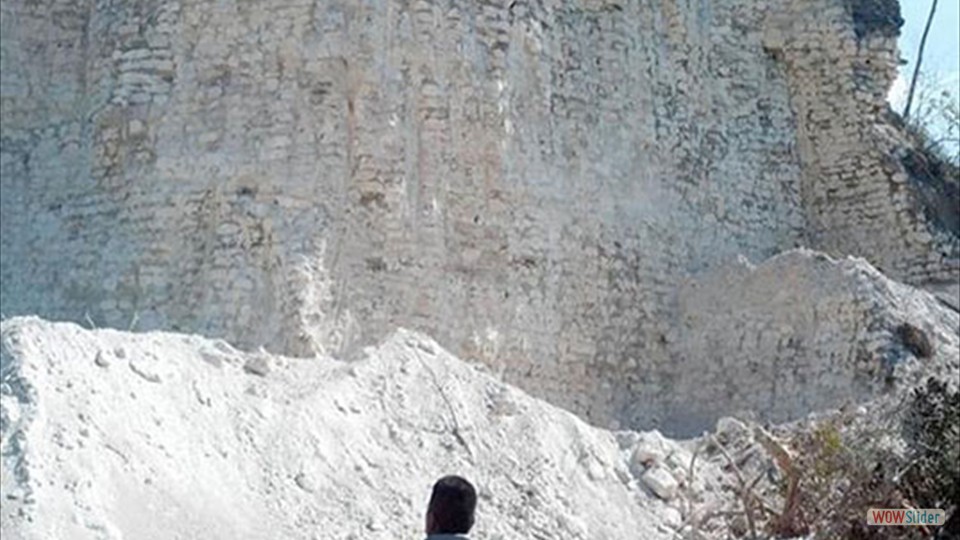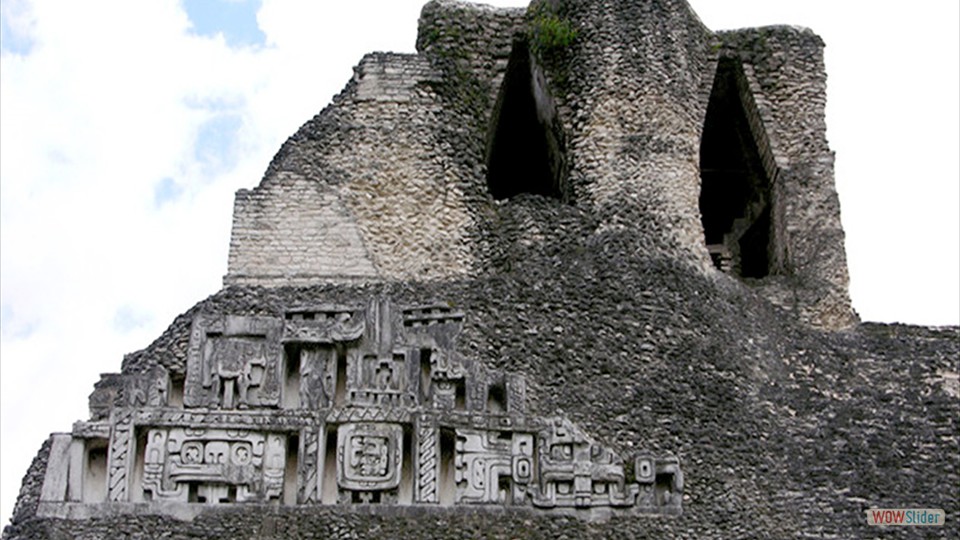Nohmul means 'Great Mound' in Mayan. Nohmul is spread out among privately owned sugar cane fields 7 miles north of Orange Walk Town in northern Belize. The site occupies about 12 square miles of land. Nohmul was occupied first during the Pre-Classic era from 350 B.C.E. to 250 C.E. and again during the Late Classical period from 600 to 900 C.E.
The ceremonial center was located on a limestone ridge and contains a massive acropolis atop which sits a pyramid. The main site also consists of two groups of buildings with ten plazas. These are connected by sacbes. Combined, these complexes house more than 81 separate buildings. Most of them were constructed either in the Pre-Classic or Classic period, although there is evidence of additional building activity in the early Post Classic.
Built at a vantage point on the Hondo River to control the region's trade routes, the site had a long life. Structures of the northern Yucatán type were built over those erected in the Classic. Some of these new constructions covered the front of older stairways. These newer constructions include one that resembles the Caracol in Chichen Itza These later constructions support the theory that outsiders from the Yucatan settled in Nohmul.
Belize real estate attorney Alejandro Bolsa de Duchez defended the destruction: "The Mayans could not keep up on their payments and were foreclosed on and evicted long ago, so I don't know why anyone is crying about this. The place doesn't even have functioning toilets. The electrical is primitive, at best. Face it, it's not a fixer-upper, it's a teardown.




 1
1 2
2 3
3